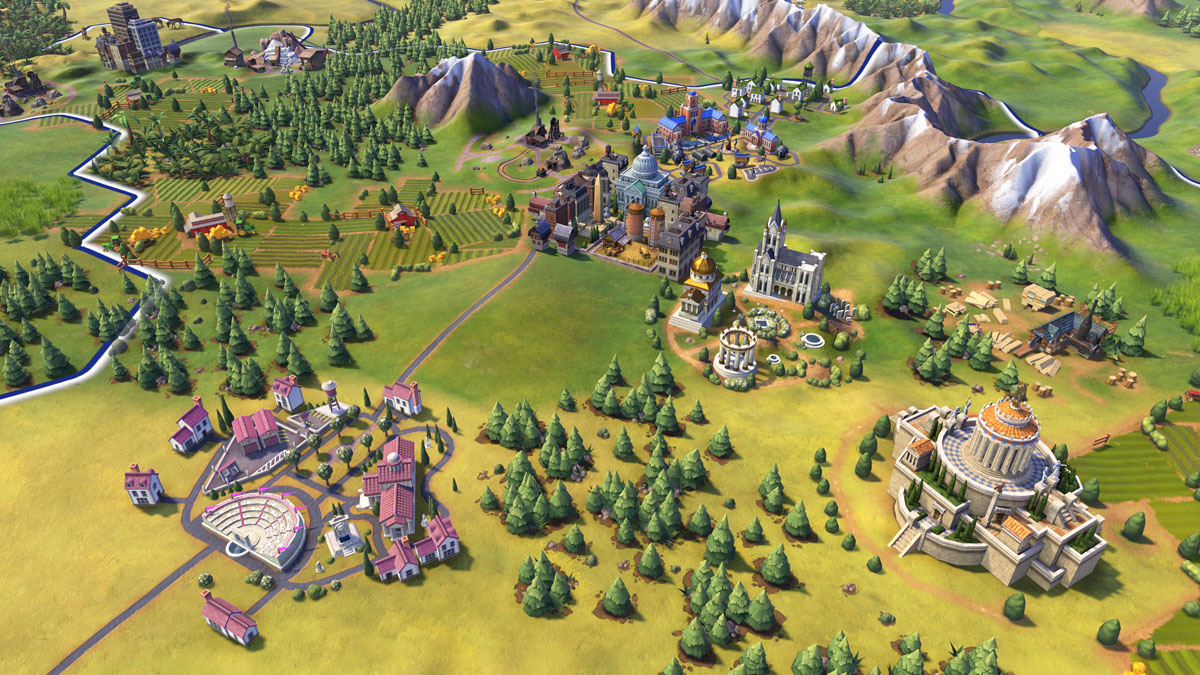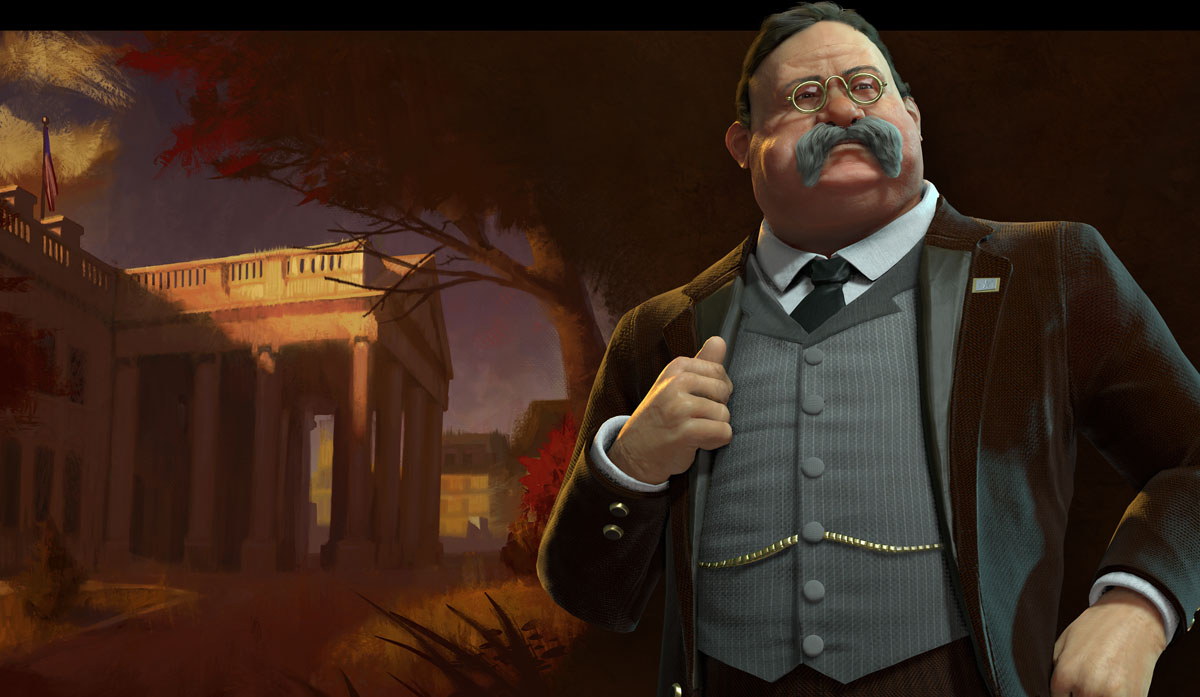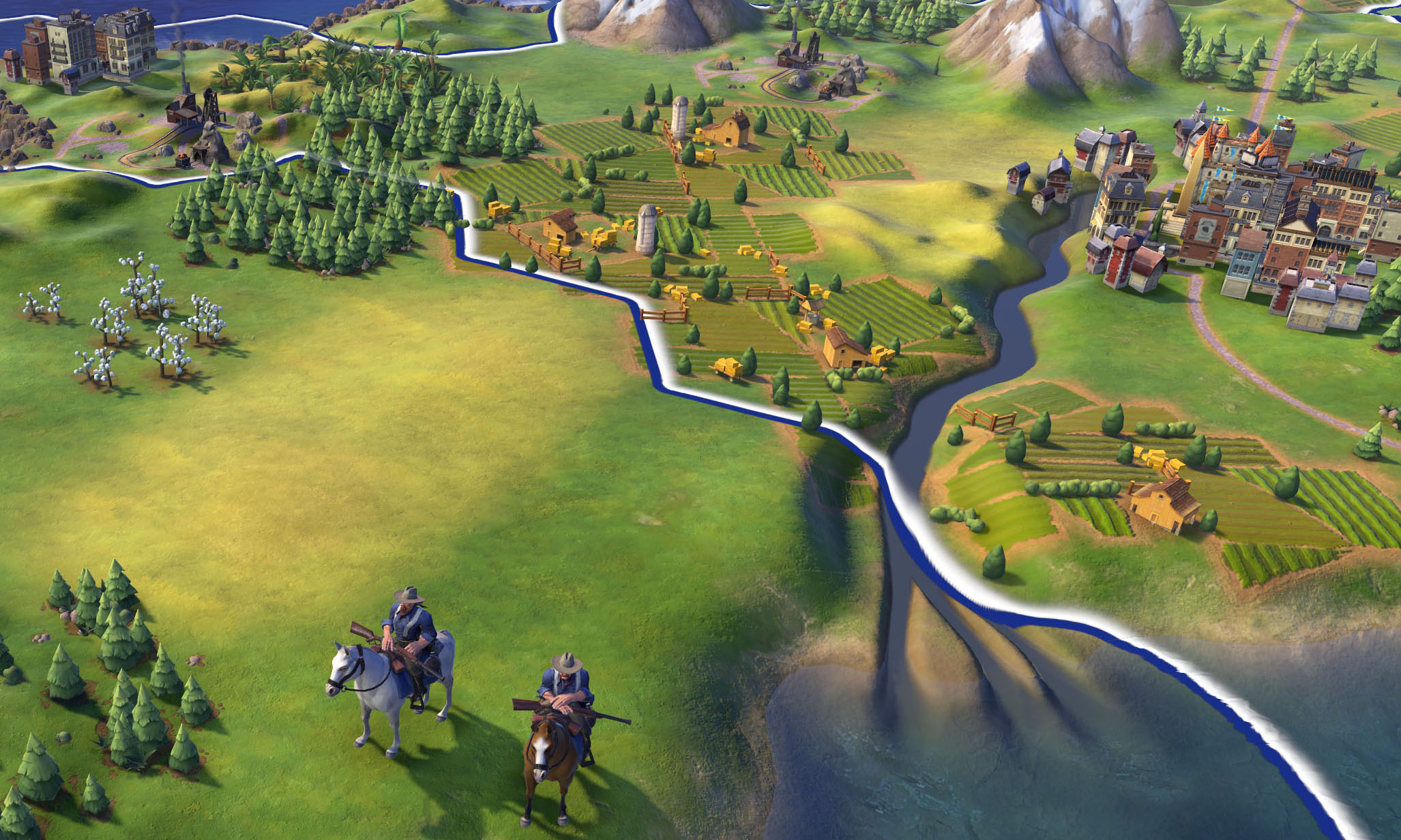New looks and classic gameplay: 60 turns of Civilization 6
The 4x strategy has changed, but fans will still feel right at home.
As a semi-casual Civ player I immediately felt at home playing Civilization 6 at a recent hands-on event in Los Angeles. It’s Civ. It feels like Civ and plays like Civ. For the 60 turns we were given to play, I had little trouble jumping right in and getting busy building my typical poorly-planned empire, exploring the map, stomping barbarians, and of course completely pissing off the other AI leaders I met.
As familiar playing Civ 6 felt, some changes were immediately evident, beginning with the change that drew a lot of attention a few weeks ago when we got our first look at some screenshots and a trailer: the art style. Not all of the attention was positive. Many Civ faithfuls were turned off by the bright colors, the mildly cartoony style, and the clean and somewhat sanitized visuals.
Civilization 6’s Senior Producer Dennis Shirk, speaking to PC Gamer's Phil Savage, said the negative response to the new art style didn't surprise him. "When you play 500 to a thousand hours of a game like Civ 5, when you do an overhaul like we did, it's going to be startling no matter what because it's a game people really love to play. And when they see just plain screenshots without motion, without UI, without everything else that goes into it, without the context of why we did it, I can understand why there's consternation."

Urban sprawl
This new style, we were told, was directly related to some of the new gameplay changes. Adding districts to the cities and Wonders taking up their own tiles meant the map needed to be easier to read, even when players zoom all the way out.
You recognize exactly what's on the map, where it is, and what its primary function is
"In the previous games, everything is vertical, everything's in the city,” Shirk said. “We didn't have to represent anything on the map except improvements so you didn't need a whole lot of feedback to look at a farm and know it's a farm or a mine. But when you take all of the buildings out of the cities, so you've twelve districts, each district has three to four buildings [and] you have to have it readable out of the map... we don't want people to have to sit there all the time going on a tooltip clickfest, or have special UI on all the time that says what's in each one. So, we've modeled out every single building, we themed everything to stylized colors, stylized shapes, so when you have a campus down you see the blue roof on the library, the blue roof on the university, on the research lab, you see the magenta color in the amphitheater and everything.
“So even when you're walking by another city, or you're invading, you don't have to, again, roll over anything. It doesn't matter if you're zoomed out, you recognize exactly what's on the map, where it is, and what its primary function is without even having to mouse over it."
While the new art style can be a bit jarring, it’s not really an entirely new look. Shirk told us the designers combed through past Civ games to sample the elements they liked and combine them, lifting the the color palette from Civilization Revolution, the iconic style of Civ 4, some of the detail from Civ 5. “We took all of those things to create basically the look that we have now.”
Keep up to date with the most important stories and the best deals, as picked by the PC Gamer team.

The fog lifts
While I’m not personally in love with the new art style, I did find the map easy to read: the tiles felt distinct, the units were easy to identify, and I rarely had to do anything beside simply look at something to know what it was. And there’s one major improvement: the traditional fog of war is no more. It’s always been my least favorite visual component of strategy games: covering a beautiful, sprawling, detailed map in dull gray clouds or dark fog. While it serves the obvious purpose of hiding the things you shouldn’t be able to see, I’ve always found it a real bummer to stare at for most of the game. That’s thankfully gone now, hopefully forever, as Civ 6 replaces the fog with something that looks more like a layer of parchment paper, which dissolved beautifully as I explored new tiles and reformed itself as behind me as I moved on. It’s an immensely pleasing visual and a welcome change to an ugly and dull vision-limiting cloudbank.
Pretty as it was, I wanted to banish as much of this improved fog as I could during my session, so I focused on ship-building to quickly travel the waterways and I created scouts to tramp in every direction over land. I also wanted to build as much as I could, so I created builders, which have replaced workers from the earlier games. Unlike workers, builders have a limited number of uses before they vanish, at which point you'll have to generate new ones, but they can improve tiles instantly rather than having to wait a few turns.

I was also able to try out the feature that allows you to embed support units with other units. While I was out pushing my fleets to explore the glacier-choked waters far to the south of the map and stomping out enemy camps with my warriors, I’d neglected to leave anyone to defend my city against barbarians, and several groups of them crossed my borders and began burning my farms unchallenged. I quickly whipped up another retinue of warriors to slap the invaders down, and fearful of my builders being attacked later, I embedded a warrior in their midst as an escort.
I had hoped to get a taste of combat beyond the small skirmishes against barbarian camps, but unfortunately by the time I finally met Teddy Roosevelt in a small town called The United States, I didn't have enough turns left in the demo to really mix it up—despite declaring a “surprise” war on him just a few minutes after making his acquaintance. That is probably a good thing—he is no one to trifle with—and all I got to do was watch a single unit of The Rough Rider's forces stomp my crude little band into tatters. I think barbarians, at that stage, were a bit more my speed, but I would have liked to have seen how conquering a city works with the new district system in place.
Culture Wars
Culture players will have a better time of things in Civ 6. Traditionally, a culture victory is challenging if you find yourself parked next to a science-minded and militaristic civilization. You just can’t keep up with their tech or armies, and you’re somewhat at their mercy if they decided to conquer you. Civ 6 will give you some new ways to combat that situation.
"You're not going to be able to keep up with other people in terms of them getting tanks first,” Shirk said of culture-based players, “but because you've got this humongous range of possible policies to put into your amazing, wide-slotted government, you're going to cut your unit maintenance in half, you're going to be able to produce humans faster, you're going to be able to do all these things to counter that militaristic push. Aside from all the other benefits you get from policies, because he's not going to be nearly as deep in the policy tree to have those benefits. So, this is more along the lines of—this gives the builder that equal footing."
There's a whole different level if you want to play that aggressive religion-versus-religion game.
Players who love to build, we were told, can also experience a bit more freedom and worry less about grouchy citizens in far flung, less-than-optimal locations.
"One thing I think is the best for people who love to min-max, is as a culture player you no longer have to worry about that small [city]. With local happiness you can go as wide as you want. You can build that crappy little city up in the tundra just to get that iron, and they're going to be kind of unhappy, they're going to be displeased, but you can do that because it's not going to affect your entire empire, it's just going to be that city that's unhappy."

Keep the faith
I didn’t muck about with religion during my session, but Shirk said there’s a more robust system in place for those who want to use a faith-based approach to conquest. The foundation seen in Gods and Kings is present, but has been expanded upon.
“Aside from custom cathedrals, meeting houses, etc. that you can put into your holy site now based on a belief, you can also have powers,” said Shirk. “For example, being able to purchase theater districts or commercial hubs with faith alone. You're going to have religious combat now, you're going to have inquisitions, you can have inquisitors, apostles, there's a whole different level if you want to play that aggressive religion-versus-religion game.”

Spy games
Espionage will be present throughout the game, and grow more complex and important as you play. The information gathering begins at the lowest levels, with traders setting up a trade route and bringing back not just goods but a little gossip and a few tidbits of information about the city they’ve visited. You can follow up the trader with a delegation, and then a proper spy as you attempt to uncover the randomly determined hidden agenda of the AI leaders, which they have alongside their historical agendas.
"Eventually you'll be hearing gossip about everything he's doing as an AI routine in his civilization. You've got great relations, but that's not stopping you from spying on your allies to make sure you're getting all the information."
I enjoyed my brief time with Civ 6 and I’m looking forward to more. I'm especially keen to see how the game's changes work past turn 60. Like I said, it feels very familiar, even for someone like me who hasn't played hundreds of hours of Civ in the past.
That's the idea, though, as Shirk explained. “There's no reason to upset the applecart. People really enjoy what they're playing. So, the big things we want to do, to change it up, we don't want to do it at the lowest level. There's no reason to do it. 4x is going to be 4x, we want to keep what makes that feel good.”

Chris started playing PC games in the 1980s, started writing about them in the early 2000s, and (finally) started getting paid to write about them in the late 2000s. Following a few years as a regular freelancer, PC Gamer hired him in 2014, probably so he'd stop emailing them asking for more work. Chris has a love-hate relationship with survival games and an unhealthy fascination with the inner lives of NPCs. He's also a fan of offbeat simulation games, mods, and ignoring storylines in RPGs so he can make up his own.

